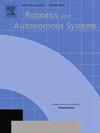责任游戏导航:混合交通条件下碰撞事故中自动驾驶汽车故障调查
IF 4.3
2区 计算机科学
Q1 AUTOMATION & CONTROL SYSTEMS
引用次数: 0
摘要
对于人类驾驶的车辆(HDV)而言,车辆在撞车事故中的过失与其驾驶员的行为和其他人为错误有着广泛的联系。由于自动驾驶汽车(AV)能够与外部环境沟通,因此引入自动驾驶汽车有望消除此类人为失误。然而,各种报告都记录了自动驾驶汽车在碰撞事故中的过失。本研究应用文本挖掘和混合效应逻辑回归(MELR)对加利福尼亚州 2017 年至 2022 年期间收集的涉及自动驾驶汽车的碰撞数据进行分析,以探讨自动驾驶汽车在碰撞中过失的可能性。结果发现,在 497 起碰撞事故中,涉及自动驾驶汽车过失的比例相对较小(14.29%)。文本网络结果显示了与自动驾驶汽车过失相关的关键词模式。这些模式包括常规操作模式、撞击区域和造成的伤害。此外,MELR 的预测准确率约为 93%,灵敏度为 83%,其结果显示,当自动驾驶汽车以传统模式运行或涉及脱离时,其发生故障的可能性会增加。此外,转弯、并线或变换车道动作、天气状况不明以及在四车道或更多车道的道路上运行,都会显著增加自动驾驶汽车在碰撞事故中的过失几率。相反,与住宅用地相比,在商业用地、交叉路口以及涉及卡车的碰撞事故中,自动驾驶汽车的过失概率较低。研究结果的实际意义在于改善自动驾驶汽车的运营。本文章由计算机程序翻译,如有差异,请以英文原文为准。
Navigating the blame game: Investigating automated vehicle fault in collisions under mixed traffic conditions
Vehicle being at fault in a crash has extensively been associated with its driver's behaviors and other human errors for human-driven vehicles (HDV). The introduction of automated vehicles (AVs) is expected to eliminate such human errors due to the ability of AVs to communicate with the external environment. However, various reports have documented AVs being at fault in collisions. This study applied text mining and mixed-effects logistic regression (MELR) on crash data involving AVs collected between 2017 and 2022 in California to explore the likelihood of an AV being at fault during a collision. It was found that among 497 crashes, a relatively small percentage (14.29 %) involved AVs being at fault. The text network results revealed patterns of keywords associated with the AVs being at fault. Such patterns include conventional mode of operation, area of impact, and resulting injuries. Furthermore, with about a 93 % prediction accuracy and an 83 % sensitivity score, the MELR results revealed that the likelihood of AVs being at fault increases when they are operated in conventional mode or when disengagement is involved. Moreover, turning, merging, or changing lane movements, unclear weather conditions, and operating on roadways with four or more lanes significantly increased the odds of an AV being at fault during a crash. Conversely, AVs were less likely to be at fault in commercial land use than residential land use, at intersection locations, and when the crash involved a truck. The practical implications of the findings are presented to improve AV operations.
求助全文
通过发布文献求助,成功后即可免费获取论文全文。
去求助
来源期刊

Robotics and Autonomous Systems
工程技术-机器人学
CiteScore
9.00
自引率
7.00%
发文量
164
审稿时长
4.5 months
期刊介绍:
Robotics and Autonomous Systems will carry articles describing fundamental developments in the field of robotics, with special emphasis on autonomous systems. An important goal of this journal is to extend the state of the art in both symbolic and sensory based robot control and learning in the context of autonomous systems.
Robotics and Autonomous Systems will carry articles on the theoretical, computational and experimental aspects of autonomous systems, or modules of such systems.
 求助内容:
求助内容: 应助结果提醒方式:
应助结果提醒方式:


